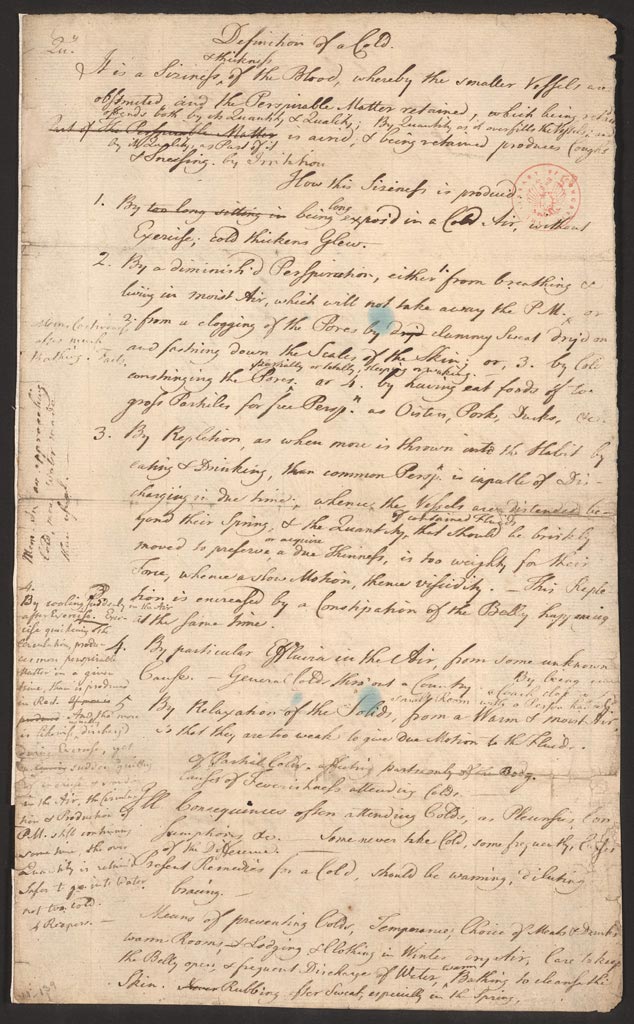Acute viral nasopharyngitis historical perspective: Difference between revisions
Jump to navigation
Jump to search
Ahmed Younes (talk | contribs) No edit summary |
Ahmed Younes (talk | contribs) No edit summary |
||
| Line 3: | Line 3: | ||
{{CMG}};{{AE}}{{AY}} | {{CMG}};{{AE}}{{AY}} | ||
==Overview== | ==Overview== | ||
Common cold was first considered by Benjamin Franklin in the 18th century. | Common cold was first considered as a distinct diagnosis by Benjamin Franklin in the 18th century. | ||
==Historical Perspective== | ==Historical Perspective== | ||
Revision as of 18:49, 24 July 2017
|
Acute viral nasopharyngitis Microchapters |
|
Differentiating acute viral nasopharyngitis from other diseases |
|---|
|
Diagnosis |
|
Treatment |
|
Case Studies |
|
Acute viral nasopharyngitis historical perspective On the Web |
|
American Roentgen Ray Society Images of Acute viral nasopharyngitis historical perspective |
|
Acute viral nasopharyngitis historical perspective in the news |
|
Risk calculators and risk factors for Acute viral nasopharyngitis historical perspective |
Editor-In-Chief: C. Michael Gibson, M.S., M.D. [1];Associate Editor(s)-in-Chief: Ahmed Younes M.B.B.CH [2]
Overview
Common cold was first considered as a distinct diagnosis by Benjamin Franklin in the 18th century.
Historical Perspective
- In the 18th century, Benjamin Franklin considered the causes and prevention of the common cold.
- After several years of research he concluded: "People often catch a cold from one another when shut up together in small close rooms, coaches and when sitting near and conversing so as to breathe in each other's transpiration."
- Although viruses had not yet been discovered, Franklin hypothesized that the common cold was passed between people through the air.
- He recommended exercise, bathing, and moderation in food and drink consumption to avoid the common cold.[1] Franklin's theory on the transmission of the cold was confirmed some 150 years later.[2]
Common Cold Unit
 |
- In the United Kingdom, the Common Cold Unit was set up by the civilian Medical Research Council in 1946. The unit worked with volunteers who were infected with various viruses.[3]
- The rhinovirus was discovered there in the common cold unit (CCU) in the 1950s and scientists were able to culture the virus on a tissue culture.
- In the 1970s, the CCU proved that using interferon in the incubation period is protective at some level against developing the infection.
- In 1987, the unit completed its research on the zinc gluconate lozenges for prophylaxis against the Rhinovirus.
- In 1989, the unit was closed.[4]
References
- ↑ "Scientist and Inventor: Benjamin Franklin: In His Own Words... (AmericanTreasures of the Library of Congress)".
- ↑ Andrewes CH, Lovelock JE, Sommerville T (1951). "An experiment on the transmission of colds". Lancet. 1 (1): 25–7. PMID 14795755.
- ↑ Reto U. Schneider (2004). Das Buch der verrückten Experimente (Broschiert). ISBN 344215393X.
- ↑ Al-Nakib, W (1987). "Prophylaxis and treatment of rhinovirus colds with zinc gluconate lozenges". J Antimicrob Chemother. 20 (6): 893–901. PMID 3440773. Unknown parameter
|coauthors=ignored (help); Unknown parameter|month=ignored (help)